Throughout the pandemic, the technology sector has been dominating the market. According to Bank of America Global Research, the market cap of the U.S. tech sector (at $9.1 trillion) exceeded the European stock market (which includes the U.K. and Switzerland and is now at $8.9 trillion), and just a few days ago, the DOW dropped Exxon Mobil after nearly a century and is replacing it with Salesforce, the enterprise software company (a change made necessary by Apple’s impending stock split).
Nonetheless, the tech sector took a big hit today as investors sold off their stock, with Wall Street’s main indexes marking their deepest one-day dives in months. However, while the technology sector may be down; it’s certainly not out. With only one chance to make a great first impression, creating a tech sector investor relations website that truly communicates the value of your company to potential investors is essential.
Since the average site visit lasts for only two minutes, IROs have to clearly convey why to invest in their company, versus a competitor — and the competition for capital amongst companies in the technology sector is fierce. Below, we take a look at five top tech sector investor relations websites and highlight the key features they’ve included to engage shareholders and potential investors.
1. Facebook: Strong Homepage
As the most visited page on a top tech sector investor relations website, leveraging thoughtful design and intuitive navigation to ensure a positive user experience is critical. It should be easy for visitors to find what they want at a glance and frequently viewed materials should be highlighted on the homepage so they don’t have to search. However, these materials shouldn’t take up too much space on the page to reduce scrolling.
Facebook’s investor relations website has a very clean and easy-to-navigate homepage, making it effortless for visitors to find the information they need. They’ve also provided quick access to their latest earnings and SEC filings by featuring them right at the top of the page. There is also a search bar in the top right corner, just in case visitors can’t find what they need on the homepage.
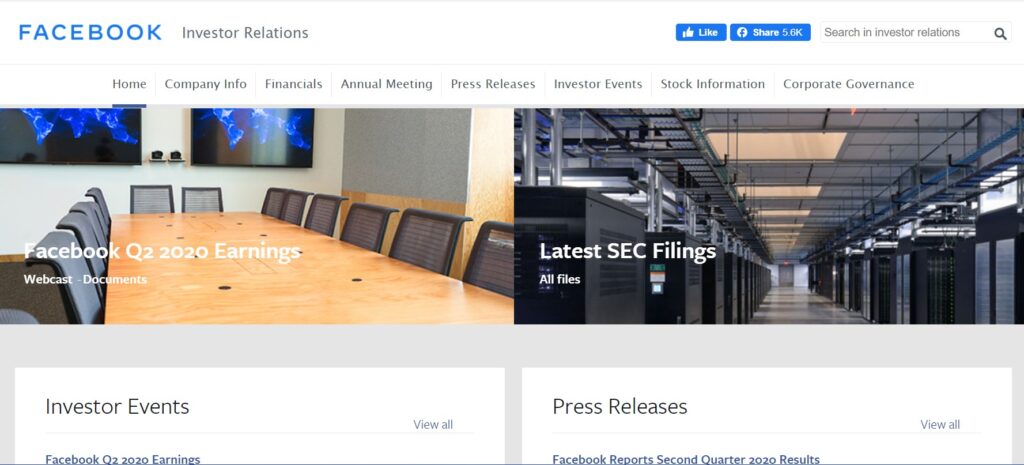
2. HP: “Why Invest?”
Including a “Why Invest” section makes it easy for users to access important information about your company and your investment proposition, which helps to attract potential investors and retain existing ones. It is also an effective platform to share your company story in a visually compelling way, for example, by incorporating engaging icons or an infographic.
HP’s “Why HP?” page shows key stats at a glance, breaking down their story into digestible bullet-points and eye-catching icons. They also include interactive tabs to consolidate and organize information for easy viewing while maintaining a clean and impactful design. The way they have organized the four key reasons to invest in HP makes it easy for visitors to quickly review, assess, and decide if they’re interested.
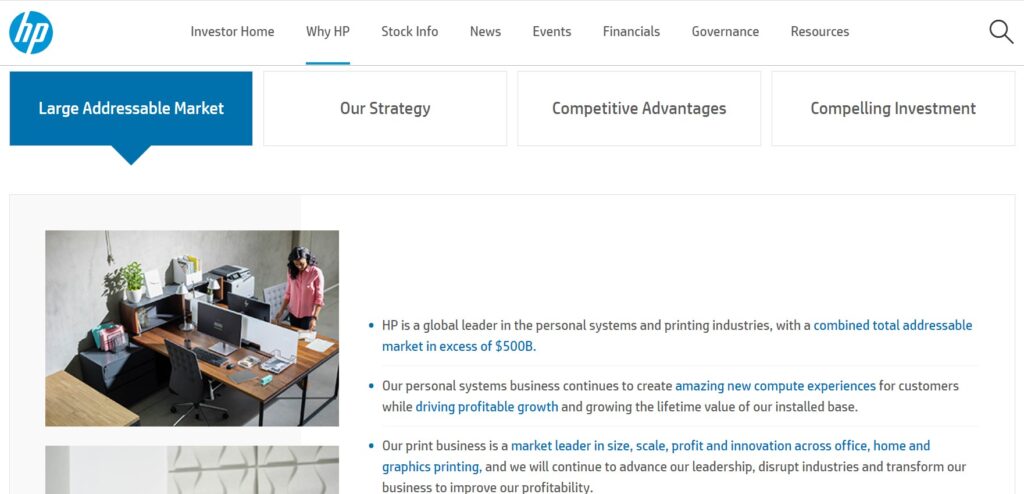
3. Oracle: Interactive Financials
Financials are one of the top three content items within an tech sector investor relations website, so make sure your financial materials are prominent and accessible. You also want to make your financial information as easily digestible as possible. For example, including quick access to all past financial reports at a glance and providing a hub that houses all materials that investors would be interested in viewing creates an effortless experience for visitors.
Alternatively, an Interactive Analyst Center (IAC) is another option for delivering interactive, “as-reported” financial and operating data. The IAC displays a company’s income statement, balance sheet, and cash flow statement, and can include non-GAAP financial measures, operational data, and key metrics.
A one of the top IR websites, Oracle’s financial section provides a bullet list of the latest key financial highlights with a link to download the full report. Scroll down a bit, and the page includes a grid-format list of past filings, financials, and other key documents for download.
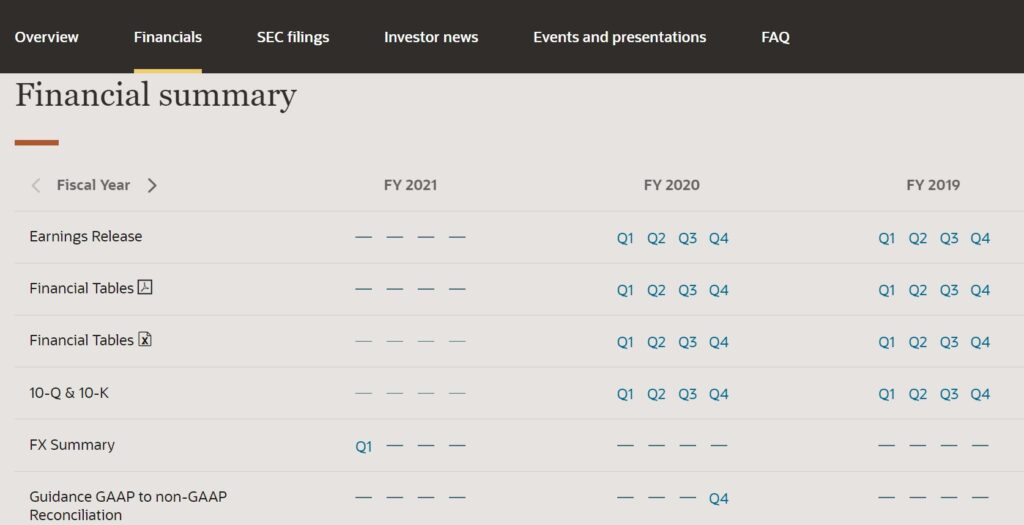
4. Apple: Share ESG Details
While investor interest in a company’s ESG criteria has been growing, even greater importance has been placed on ESG as a result of the pandemic. As we move through this period of uncertainty, investors and stakeholders are keen to know how companies plan to navigate this disruption effectively while still adhering to their environmental, social, and governance (ESG) policies. In a recent study, 91% of investors surveyed said that nonfinancial performance has played a pivotal role in their investment decision-making over the past 12 months. It’s therefore critical to leverage your tech sector investor relations website to share your ESG efforts and showcase your company’s success stories.
Apple has a comprehensive ESG page on its website, which includes links to learn more about specific initiatives. There is also a quote from the company’s CEO, Tim Cook, that reflects the values and policies listed below, which conveys the importance of these matters from the top-down. Lastly, near the bottom of the page, visitors can find a link to Apple’s ESG Index, where they are able to download it as a PDF.
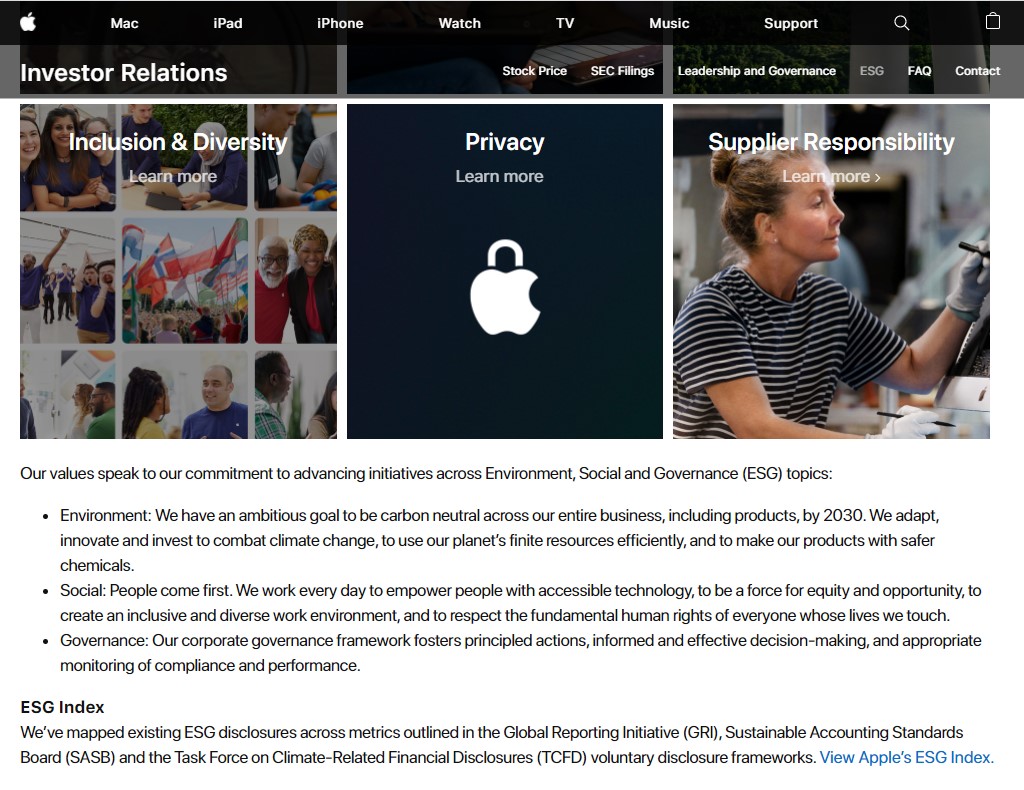
5. Make it Easy to Connect
All of the tech sector investor relations website elements highlighted above won’t matter unless potential investors or analysts can easily connect with your company. Including a section for investor resource materials and contact information, such as FAQs, email alerts, subscribe/unsubscribe, and the ability to request a meeting will make it easy for investors to stay informed and engage with your company. Additionally, incorporating your contact information into the footer is also a simple and effective way of providing investors with the opportunity to connect with you directly.
Not only does Twilio include a resource page where visitors can view a list of FAQs or submit an information request form, but they’ve included a Request a Meeting button on every page. Located in the bottom right corner, the button does not distract from the information on each web page and makes connecting with the company effortless.
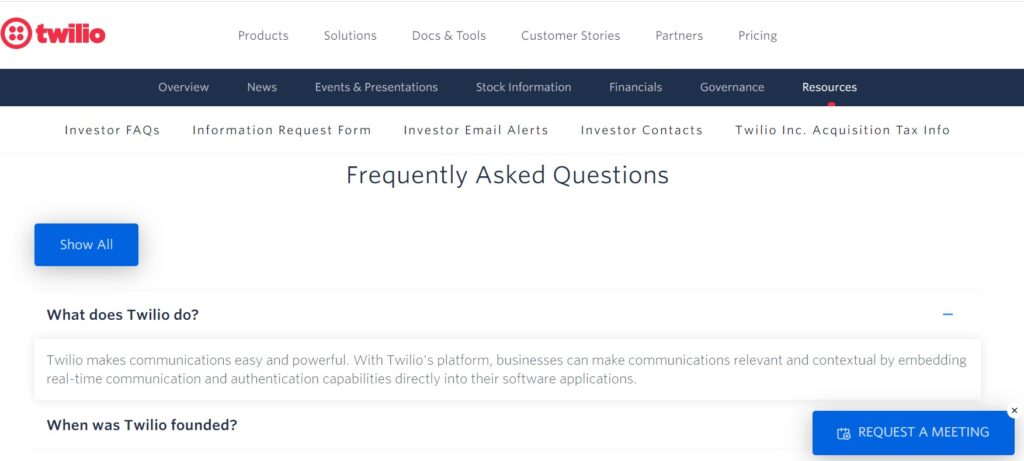
The most effective IR website is one that successfully tells your investment story, by providing investors with compelling and informative context that ultimately influences their decision to invest. Learn more by downloading our Investor Relations Website Best Practices whitepaper, which includes more information on intuitive use, mobile, company information and strategy, access to financial data, and corporate social responsibility.




